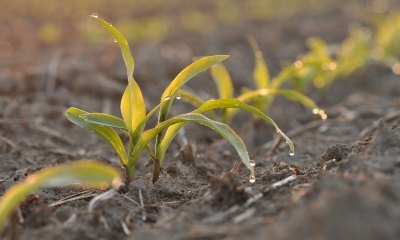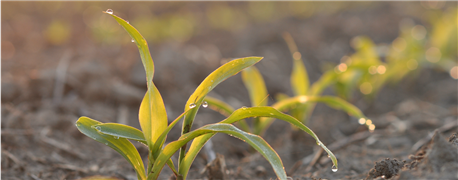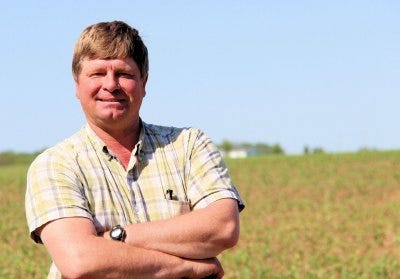
This week, the U.S. Environmental Protection Agency announced a proposed rule regarding the 2017 Renewable Fuel Standard, which would cap corn-based ethanol volumes at 14.8 billion gallons. That falls just below the 15 billion gallons set by statute for the Renewable Fuel Standard.
Ethanol volumes are widely followed in Illinois, where more ethanol is produced than in any other state. According to the Illinois Department of Agriculture, 274 million bushels of corn are used annually to produce about 678 million gallons of ethanol.

BIG IN ILLINOIS: More ethanol is produced than in Illinois than in any other state, according to the Illinois Department of Agriculture. More than 274 million bushels of corn are used annually to produce about 678 million gallons of ethanol.
"While Illinois corn farmers are happy to see the ethanol blend levels increase for 2017, we remain disappointed that the Administration won't allow this home-grown renewable fuel to grow beyond the artificial 15 billion gallon level we were supposed to achieve in 2015,” said Jeff Jarboe, Loda farmer and president of the Illinois Corn Growers Association.
Scott Irwin, University of Illinois agricultural economist, has studied ethanol markets extensively and said it’s a head-scratcher as to why EPA would come so close to the 15-billion-gallon standard but stop at the last second.
“I had previously interpreted their commentary to imply they wanted to get out of arguing,” Irwin said. “I was wrong; they apparently want to keep arguing about it.”
Irwin said the number one take away is that this proposal is very consistent with the policy trajectory that EPA established with their rulemaking last year. The other big-picture takeaway is that there’s a tilt toward advanced biofuels with a healthy increase in the biodiesel category, with a 2.1-billion-gallon mandate for 2018.

BIODIESEL: “Watch biodiesel and soybean oil markets,” said Scott Irwin, University of Illinois ag economist. “That’s where the real action in the RFS is, and where its impact on markets will be felt in the next few years.”
“Their objectives are to encourage advanced biofuels wherever possible and that includes favoring biodiesel,” Irwin added.
That’s where the big implications lie for Illinois agriculture.
“The really important message for farmers coming out of this is that they shouldn’t watch ethanol. It’s so close to where it’s capped, it won’t make a difference,” Irwin said.
“Instead, watch the advanced cap and its effect on soybeans. That component is increasing rather nicely the next few years. Watch biodiesel and soybean oil markets. That’s where the real action in the RFS is, and where its impact on markets will be felt in the next few years.”
All about biodiesel
In Illinois, 78 million gallons of soybean oil are used to make 157 million gallons of biodiesel every year, which works out to more than 50 million bushels of soybeans. The state produces 544 million bushels of soybeans annually, which means just over 9% become biodiesel.

WIN? “Increasing ethanol usage is a win for all Americans,” says Jeff Jarboe, Illinois Corn Growers president. “I'm not sure why the EPA and the Administration can't see that.”
"Biodiesel is important to Illinois soybean farmers and it supports our economy. We believe that the proposed rule can and should do more," said Mike Levin, Illinois Soybean Growers director of issues management and analysis.
Illinois politicians like Rep. Cheri Bustos, D-Ill., agree on biodiesel.
“If we’re ever going to break our addiction to foreign fossil fuels and become energy independent, we need to invest in American potential such as Illinois’ biofuel industry,” Bustos said.
Asked whether EPA was trying to make a statement with their rule stopping just short of the 15-billion-gallon mandate, Irwin offered some theories.
“Maybe they feel more comfortable in a political situation where everybody’s mad at them. If you look at their behavior, that clearly is a preference. Maybe they’re trying to be a neutral third party,” he said.
“The 200 million gallons scared them away from going all the way to the statutory level,” Irwin said. “They obviously have some internal reasoning for that.”
However, he also argued that EPA’s final rule in November may come in at 15 billion gallons by default. Irwin said the Energy Information Administration’s gas consumption estimate is too conservative. And when the RFS is based on percentage standards instead of volume, the volume standard goes up with total consumption. Irwin said he won’t be surprised if the final rule in November is much closer to 15 billion gallons.
Illinois Farm Bureau’s Rich Guebert believes EPA could have given the oil industry incentives to invest in higher blend levels with a higher target.
“While we applaud EPA for the timeliness of its 2017 proposal and for expanding the use of biofuels next year by another 700 million gallons, once again we believe the agency’s proposal falls short of maximizing the potential of the U.S. biofuels industry,” Guebert said.
About the Author(s)
You May Also Like






